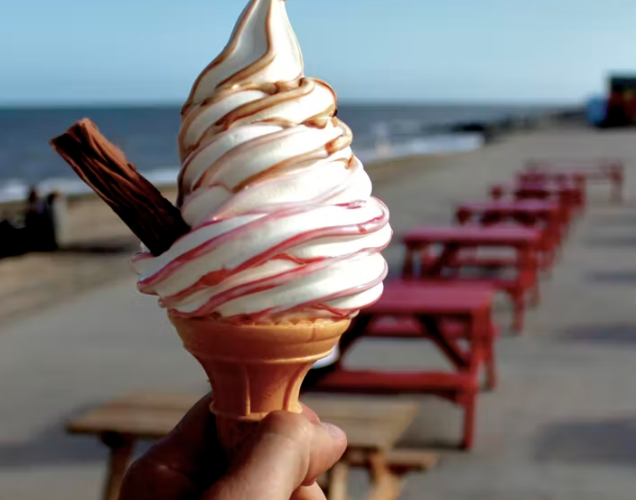
[ad_1]

Demand for soft drinks and ice-creams has touched a five-year high, with the early onset of summer, improved power supply in villages, return of push-cart workforce to cities, and revival of business and leisure travel as well as general mobility.
“We have not seen such high demand in over five years in summer and all plants are running to full capacity. This is because of early summer, the power situation in villages which has improved significantly so retailers can stock better, minimal price increases, and return of mobility,” PepsiCo’s largest South Asia bottling partner Varun Beverages Ltd (VBL) chairman Ravi Jaipuria said.
This comes after a complete washout in the past two summer seasons which saw cold beverages and ice-creams being severely hit amid local curfews, shut-downs of marketplaces and malls, and misconceptions about cold foods and beverages possibly increasing chances of Covid-19 infection.
Gujarat Cooperative Milk Marketing Federation (GCMMF) managing director RS Sodhi said ice-cream sales of its Amul brand have crossed close to 40% over the summer of 2019 so far: “This year, summer has come 20-25 days early, push-cart workforce which had left for villages last two years has returned which is helping to mobilise sales, there has been minimal price increases in ice-cream compared to other FMCG products, and there’s pent up demand which was impacted last two years because of the pandemic.”
A spokesperson for Mother Dairy said its ice-cream sales have clocked growth of over 50% versus pre-Covid levels on the back of rising temperatures, enhanced number of distribution assets coupled with the wedding season and opening up of restaurants, offices and educational institutions. “While the surge in demand is across categories, however, we are seeing the demand more skewed towards impulse category,” a company spokesperson said.
Milind Pingle, chief executive of Allana Consumer Products which distributes the premium London Dairy ice-cream in India, said the company expects to see sharp, double-digit growth this summer. “We have invested in e-commerce and expect London Dairy sales to not only accelerate across aggregators platforms and quick commerce, but also through modern and traditional trade,” he said. Pingle said sales are escalating for both in-home packs and impulse consumption with reopenings of hotels, restaurants, schools and colleges which are “critical enablers for ice-cream consumption”.
For soft drinks, the April-June months contribute over 65% to overall sales of the Rs 20,000-crore packaged beverages category, and out-of-home channels including restaurants and bars, cinemas, airports and entertainment complexes account for more than half of soft drink sales.
Both Coca-Cola and PepsiCo have announced increasing capacity to meet rise in demand and mobilised retail channels to increase stock replenishment cycles while premium ice-cream brand London Dairy said sales have surged through e-commerce platforms.
“This year, demand has overtaken supplies in our plants; our lines are running to full capacity which is happening after at least four years,” said the chief of one of Coca-Cola’s biggest bottling partners. He requested not to be named.
Analysts said both soft drinks and ice-cream categories are bucking the trend, at a time when there is steep increase in input costs amid an otherwise slowing consumer market, which is seeing downtrading or consumers buying cheaper edible oils, toothpaste, soap and biscuits.
Brokerage Motilal Oswal wrote in a recent report on the listed Varun Beverages that the soft drinks category is an outlier and that it expects further revival in out-of-home consumption with the opening up of business operations and travelling activity, as well as higher in-home consumption with growing penetration of refrigerators in rural and semi-rural areas per household and power availability for longer hours.
Company executives said Coca-Cola and PepsiCo have light-weighted PET bottles by 6-15%, while ice-cream companies have kept prices on hold by reducing packaging costs.
For the December 2021 quarter, Coca-Cola and PepsiCo’s global headquarters had highlighted India as a key developing growth market, as businesses reopened and vaccinations increased. PepsiCo had reported beverage unit volume growth of 20% in the quarter which it said was riding on double-digit growth in India and Pakistan. Coca-Cola reported unit case volume growth of 11% for the quarter for its Asia Pacific unit, noting that growth was driven by China, India and the Philippines. The company had said in India saw sequential increase in market share and nearly 30% growth in transactions for the quarter.
[ad_2]
Source link

